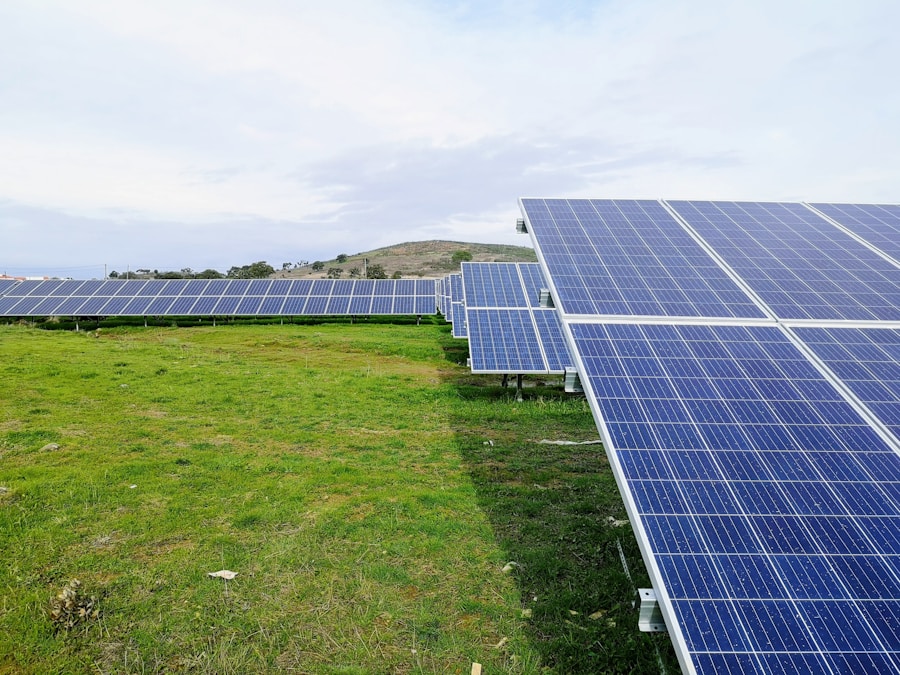Green energy incentives are government or utility-based programs that offer financial benefits to individuals or businesses who invest in renewable energy sources or energy-efficient technologies. These incentives are designed to encourage the adoption of green energy practices and reduce reliance on fossil fuels, ultimately leading to a more sustainable and environmentally friendly energy landscape. Green energy incentives can come in various forms, including tax credits, rebates, grants, and low-interest loans. By taking advantage of these incentives, individuals and businesses can not only reduce their carbon footprint but also save money on energy costs in the long run.
In recent years, there has been a growing emphasis on the importance of transitioning to green energy sources to combat climate change and reduce environmental impact. As a result, governments around the world have introduced a range of incentives to promote the adoption of renewable energy technologies such as solar panels, wind turbines, and energy-efficient appliances. These incentives are often part of broader energy policies aimed at achieving specific targets for renewable energy generation and reducing greenhouse gas emissions. Understanding the various green energy incentives available in your region is crucial for making informed decisions about investing in sustainable energy solutions.
Financial Benefits of Green Energy Incentives
One of the primary benefits of green energy incentives is the financial savings they offer to individuals and businesses. By taking advantage of tax credits, rebates, and other incentives, the upfront costs of investing in renewable energy technologies or energy-efficient upgrades can be significantly reduced. This makes green energy solutions more accessible and affordable, ultimately leading to long-term cost savings on energy bills. In addition to direct financial incentives, investing in green energy can also increase the value of a property or business, making it a sound financial investment in the long run.
Furthermore, green energy incentives can stimulate economic growth by creating jobs in the renewable energy sector and driving innovation in clean energy technologies. As more individuals and businesses adopt green energy solutions, there is a growing demand for skilled workers in areas such as solar panel installation, wind turbine maintenance, and energy-efficient building design. This not only creates employment opportunities but also contributes to the development of a more sustainable and resilient economy. Overall, the financial benefits of green energy incentives extend beyond individual savings to encompass broader economic and societal advantages.
Tax Credits and Rebates for Green Energy
Tax credits and rebates are among the most common forms of green energy incentives offered by governments and utilities. These incentives provide financial relief to individuals and businesses that invest in renewable energy technologies or make energy-efficient upgrades to their properties. Tax credits allow taxpayers to subtract a certain amount from the taxes they owe to the government, while rebates provide direct cash back for qualifying purchases or installations. Both forms of incentives can significantly reduce the upfront costs of green energy investments, making them more accessible to a wider range of consumers.
In many countries, tax credits are available for investments in solar panels, wind turbines, geothermal heat pumps, and other renewable energy systems. These credits can cover a percentage of the total cost of the system, making it more affordable for homeowners and businesses to transition to clean energy sources. Similarly, rebates are often offered for energy-efficient appliances, lighting, insulation, and heating/cooling systems, encouraging consumers to make environmentally friendly choices in their everyday lives. By taking advantage of these incentives, individuals and businesses can not only save money but also contribute to reducing carbon emissions and mitigating climate change.
Savings on Energy Bills with Green Energy Incentives
One of the most immediate benefits of green energy incentives is the potential for significant savings on energy bills. By investing in renewable energy technologies such as solar panels or wind turbines, individuals and businesses can generate their own clean electricity and reduce their reliance on grid-supplied power. This can lead to substantial reductions in monthly electricity bills, especially in regions with abundant sunlight or wind resources. Additionally, energy-efficient upgrades such as LED lighting, smart thermostats, and high-efficiency appliances can lower overall energy consumption and further contribute to cost savings.
Moreover, some green energy incentives offer net metering programs that allow consumers to sell excess electricity generated by their renewable energy systems back to the grid. This can result in further financial benefits by offsetting electricity costs or even generating additional income for the system owner. In some cases, homeowners or businesses may even qualify for feed-in tariffs, where they receive payments for the renewable electricity they generate. Overall, taking advantage of green energy incentives can lead to substantial savings on energy bills over time, making it a financially attractive option for many consumers.
Long-Term Cost Savings with Green Energy Incentives
In addition to immediate savings on energy bills, green energy incentives offer long-term cost savings through reduced maintenance and operational expenses. Renewable energy technologies such as solar panels and wind turbines have minimal moving parts and require little maintenance compared to traditional fossil fuel-based power generation systems. This means that once installed, these systems can continue to generate clean electricity for decades with minimal upkeep costs. Similarly, energy-efficient upgrades such as insulation, efficient heating/cooling systems, and LED lighting can lead to lower ongoing operational expenses by reducing overall energy consumption.
Furthermore, investing in green energy technologies can protect consumers from future fluctuations in fossil fuel prices and utility rates. As the cost of traditional energy sources continues to rise, renewable energy becomes increasingly cost-competitive and provides a stable long-term investment. By locking in lower electricity costs through solar panels or wind turbines, individuals and businesses can shield themselves from unpredictable price increases and enjoy greater financial stability over time. Overall, the long-term cost savings associated with green energy incentives make them an attractive option for those looking to reduce their environmental impact while also saving money.
Environmental Benefits of Green Energy Incentives
Beyond financial savings, green energy incentives offer significant environmental benefits by reducing carbon emissions and mitigating climate change. By transitioning to renewable energy sources such as solar, wind, hydroelectric, and geothermal power, individuals and businesses can significantly lower their carbon footprint and contribute to global efforts to combat climate change. Renewable energy technologies produce electricity without emitting greenhouse gases or other harmful pollutants, making them a cleaner and more sustainable alternative to fossil fuels.
Additionally, investing in energy-efficient upgrades can lead to reduced overall energy consumption, further lowering environmental impact. By using less electricity for heating, cooling, lighting, and appliances, consumers can decrease their reliance on fossil fuel-based power generation and reduce emissions associated with electricity production. This not only benefits the environment but also improves air quality and public health by reducing pollution from power plants. Overall, green energy incentives play a crucial role in promoting environmentally friendly practices and driving the transition towards a more sustainable and resilient energy system.
How to Take Advantage of Green Energy Incentives
To take advantage of green energy incentives, individuals and businesses should first research the various programs available in their region. This may involve consulting government websites, utility providers, or local environmental organizations to identify eligible incentives for renewable energy technologies or energy-efficient upgrades. It is important to understand the specific requirements and application processes for each incentive program to ensure compliance and maximize financial benefits.
Once potential incentives have been identified, consumers should consider consulting with qualified professionals such as solar installers or energy auditors to assess their property’s suitability for green energy investments. These experts can provide valuable insights into the most cost-effective solutions for reducing energy consumption and generating clean electricity. Additionally, they can help navigate the application process for incentive programs and ensure that all necessary documentation is submitted accurately.
Finally, individuals and businesses should carefully evaluate the financial implications of green energy investments by considering upfront costs, potential savings on energy bills, available incentives, and long-term cost savings. By conducting a thorough cost-benefit analysis, consumers can make informed decisions about which green energy solutions best align with their financial goals and environmental values. Overall, taking advantage of green energy incentives requires careful planning and consideration but can lead to significant financial and environmental benefits in the long run.
In conclusion, green energy incentives offer a range of financial and environmental benefits to individuals and businesses looking to invest in renewable energy technologies or make energy-efficient upgrades. By understanding the various incentive programs available in their region and carefully evaluating the potential savings on energy bills and long-term cost benefits, consumers can make informed decisions about transitioning to clean energy sources. Ultimately, taking advantage of green energy incentives not only leads to financial savings but also contributes to reducing carbon emissions and mitigating climate change on a global scale. As governments continue to prioritise sustainable energy policies and utilities expand their support for renewable technologies, there has never been a better time to explore the opportunities offered by green energy incentives.

